We may receive a commission when you use our affiliate links. However, this does not impact our recommendations.
Trying to teach design is like trying to push water uphill – or so I’m told.
Despite the warnings and eyerolls from some fellow woodworking instructors, I’ve tried to build in a design component to the classes I am teaching this year.
My design process is different. No heart chakras will be opened. No power animals will be summoned. Your aura is being frisked for its lunch money.
Instead, what I do is show the students more than 100 images of the object they will build, from the earliest to the latest. I show them how the piece evolved. I explain how the functional dimensions can guide their pencils.
But I don’t talk about giant cobra heads with ruby red eyes.
I show them how you can make the trestle table’s base so it will mimic the forms found in nature. I urge them to think about the end assembly as a tree and use those slopes and shapes to create a pleasing end assembly.
But I don’t show them how to carve an evil cobra with a fully extended hood and a goatee.
So today I kicked off my first ever “design and build a trestle table” class with a dozen students at the Marc Adams School of Woodworking in Franklin, Ind. The goal for the first day was to show the students more than 600 years of trestle table designs and let them figure out how to build a table that fits their dining room or breakfast nook.
So after two hours of lecturing on table design, I set the students loose with their pencils and paper. After 10 minutes, the youngest student in the class put down his pencil and said:
“Done. I am ready to get building.”
I looked over at his paper.
“It’s a cobra. His arms are holding up the top.”
I looked at his drawing of the man-cobra. I asked how he would make the muscled arms bend to hold the top. I questioned the joinery he had ahead of him.
He simply looked down at graph paper and began sketching. After 10 more minutes, he again declared: “Done.”
It was a giant cobra head that supported one end of the table. The other end was another cobra head. They were joined by a stretcher. So yup, it was a trestle table.
The joinery was solid. The 12/4 poplar was available for the job. I could think of no good protest. So I approved his idea for a cobra trestle table.
It might take him longer than five days to carve everything to shape, but if he really wants to make it, he has a great sketch. And, just as important, he doesn’t have a teacher trying to hold him back.
So bring on the cobra.
— Christopher Schwarz
Here are some supplies and tools we find essential in our everyday work around the shop. We may receive a commission from sales referred by our links; however, we have carefully selected these products for their usefulness and quality.



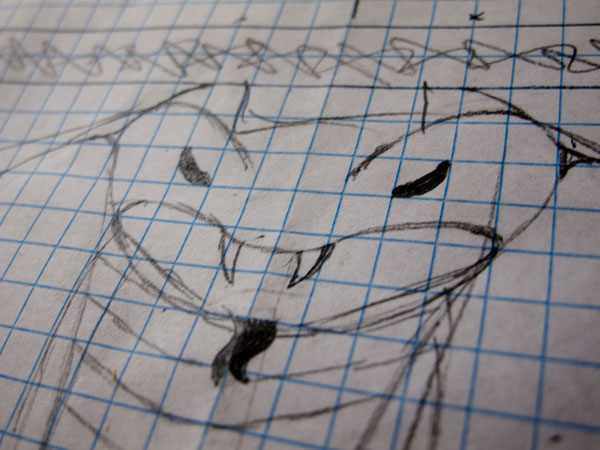
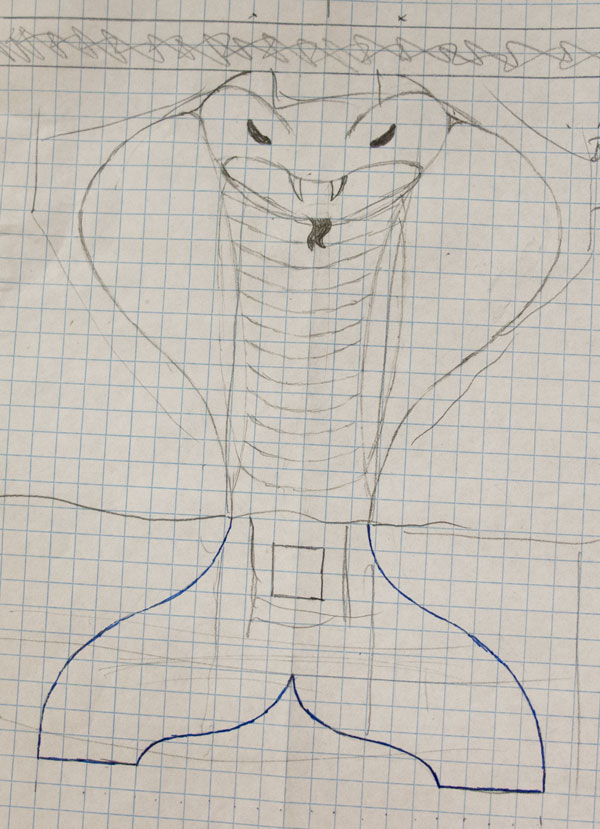
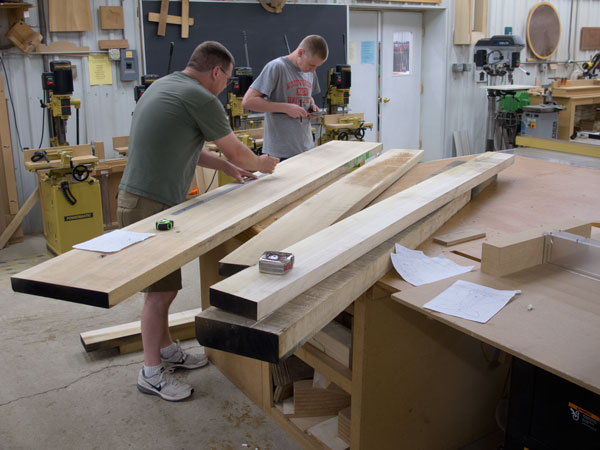
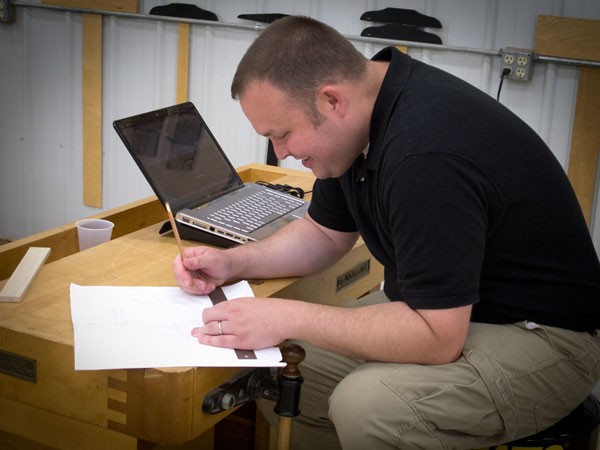





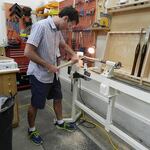

Pics of the Cobra Command trestle table, or it didn’t happen!
What I get out of this is to review the historic record and allow that to guide the subconscious. I’m pretty sure that Mr Schwarz is on to something with the teaching technique of allowing students to immerse the mind with illustrations of the subject at hand and then letting that information do its work on the synapses before being drawing out the distilled product of that individual’s mind. In my case it has led to learning about the Golden Mean and the French Curve, which then led me to find out that I can draw more than stick figures!.
I’m looking forward to reviewing library index card cabinets and the old school pharmacists’ cabinets for inspiration. I don’t know, I just like a little drawers and stuff.
Regards!
Albert A Rasch
At home and enjoying it!
Snaker Style Chairs: I have the perfect Snaker style chair to go with the table. I don’t knoe how to post apicture so here is the link on Lumberjocks.
http://lumberjocks.com/projects/84804
Definitely let the juices flow! As a woodworking teacher I had gotten some exotic wood from the Mystic Seaport and decided to have the kids design and make a hand plane from it. I had Herb Kean & Jack Whelan come in and present to the kids the design and making of planes. I figured to follow the KISS method. Herb showed the kids his dragon plane and that was it. At least 3 boys wanted to make one with a dragons head for the front knob. I cautioned them but allowed them their freedom. As usual the boys surprised me and spent many extra hours before and after school carving with the dremel to get their project perfect. We had whale planes, airplane planes, rabbet planes and just about every imaginable design that one could dream up. It was a lesson for me in the creativity possible when one lets the ropes loose. It also made me aware of the student’s ambition when they worked on a design of their own. Keep it up Chris.
One of my all-time favorite trestle tables is the one Roy Underhill made on one of his shows a while back. It was simple in design with nice proportions and very functional. I think he said the inspiration for it came from a Shaker village in Massachusetts. I have a sketch of the pertinent details and forms along with notes I took while watching the show that I will use when I build my version. I bet this is a fun class. Wish I was in it too. Thanks for the post.
One of the most important things a teacher can do is help a student learn the basics. While it is wonderful to have aspiring ideas the student does not have skill or technique. When the teacher allows the student over reach the teacher is setting the student up for discouragement and failure. Great masters learn the basics and then blossom beyond that into creativity. Perhaps another study into the history of craftsmanship of all kinds is indicated. Picasso, van Gogh, Maloof, Roubo, Davinci, Michaelanglo all were apprenticed before they became their own masters and their basic skills mastery can be seen in their early works. When one ignores the basics, especially in design, failure awaits. While I agree with the study of the many models I do not think it wise or appropriate for one to let the student overreach. It would have been wise to suggest a design that could be successfully completed in five days that could also be amended at a later date moving towards the desired model.
Is there a list of classes and locations you are teaching at?
Thank you!
This is great!
The only thing that would concern me is if the student was wearing a blue helmet with a shiny silver face mask.
Bad news is, he might be the leader of a notorious crime organization bent on taking over the world.
Good news is, he probably can’t hit anything he shoots at.
Done right that could be like the work of Judy Kensley McKie. She has a series of glass topped tables that are supported by three snakes. Very cutting edge and cool.
Love it!!! Just not sure that I’d feel comfortable sitting at either end of the table. 🙂
Being an old fart [and graphic designer] the only metric I cling to is the “golden section”. It works and gives a pleasing proportion to just about everything. After that, the Fibonacci progression for drawer sizing and all else by eye. In the end, it’s what pleases the latter that’s most important, snakes and all.